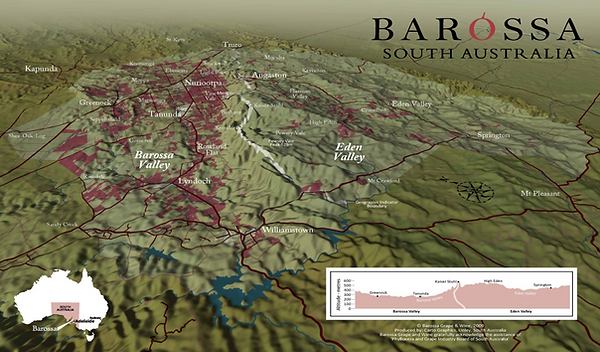
BAROSSA CENTRAL ESTATE
NATIONAL VINEYARD FUND OF AUSTRALIA LIMITED
THE VINEYARD
The Barossa Central Estate vineyard, owned 50% by NVFAL, is another super-premium vineyard which produces A & B grade fruit for its purchasers. The grapes are destined for the various premium products, including Treasury Wines Estate.
It is located in the central region of Tanunda in the famous Barossa Valley region approximately 65km northeast of Adelaide in South Australia. Barossa Central Estate is located approximately 1 km north of Tanunda in the heart of the region.
The 17.8ha property is located on the western side of Barossa Valley Highway on Buring Road, Tanunda and is approximately 150m above sea level.

The original vineyard was planted from the 1960’s to 1970’s a mixture of Shiraz, Cabernet and white varieties. The property was owned by the Lehmann family and was fully planted at this time.
The land is mostly flat and has a small winter creek that runs through the property to the North Parra river on the western boundary. While the water flow is low in most years, large rainfall years can result in significant catchment in the out stream dam. There is some native vegetation and other grassed land within the site but no further area for planting.
The soils are rich loams and provide ideal growing conditions for super-premium wine grapes. The land is able to draw from BIL or bore water drawn from pumps on the property. Irrigation is discussed in the Water section below.
VINEYARD LAYOUT
Today, Barossa Central Estate is planted to 14.9 ha, a combination of classic red varieties of Cabernet Sauvignon, Cabernet Franc and Shiraz, together with some old planting of Semillon, White Frontignac and Chardonnay recently removed and replanted to Shiraz.
The mix of wine grape varieties planted on Barossa Central Estate are being changed to focus solely on red varieties ‘in-demand’ and will be chosen by FABAL Operations in conjunction with the new purchasers of grapes from the property.

Shiraz will dominates the planting on the Estate because of its notable reputation on the floor of the Barossa Valley region. It is also projected that demand will continue in the long term.

